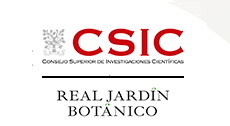Scientific Area
The Cuba Conundrum: Insights into Caribbean Zamia (Zamiaceae, cycadales) evolution
ID: 613 / 304
Category: Abstract
Track: Pending
Proposed Symposium Title: The Cuba Conundrum: Insights into Caribbean Zamia (Zamiaceae, cycadales) evolution
Authors:
Michael Calonje1, Ramona Oviedo Prieto2, Gabriel Brull Puebla3, Lisbet Gonzalez-Oliva2, Ramiro Chaves2, M. Patrick Griffith1, Javier Francisco-Ortega4,1, Dayana Salas-Leyva5, Mario Coiro6,7, Alan W. Meerow1,8
Affiliations: 1 Montgomery Botanical Center, Coral Gables, Florida, USA 2 Instituto de Ecología y Sistemática, Habana, Cuba 3 Empresa Nacional para la Protección de la Flora y la Fauna, Habana, Cuba 4 Florida International University, Florida, USA 5 University of Cambridge, Department of Biochemistry, Cambridge, UK 6 Department of Palaeontology, University of Vienna 7 Ronin Institute for Independent Scholarship, Montclair, USA 8 Arizona State University, College of Life Sciences, Tempe, AZ, USA
Abstract:
We used SSR and Single Copy Nuclear Gene molecular markers to explore patterns of genetic variation across 130 wild populations of Caribbean zamias sampled throughout the entirety of their geographic range. We report the results of several genetic analyses with an emphasis on populations occurring in Cuba, the country with the highest species richness (6 currently accepted spp.) and morphological diversity in this group. We present the following findings: 1) The strongest genetic separation is between zamias in Florida and those occurring in the rest of Caribbean, 2) Cuban populations appear closest to the ancestral Caribbean zamia population and other Caribbean Islands where colonized from Cuba, 3) Bahamian populations are closest genetically to Cuban populations and there is a close relationship between populations in Dominican Republic and Puerto Rico and between populations in Jamaica and the Cayman Islands, 4) Hispaniola was colonized from Puerto Rico rather than from Cuba, explaining the unusual distribution of the genus on the island, where it is restricted to Eastern Dominican Republic, 5) 80% of Florida populations have Heterozygote excess indicating a recent bottleneck event, likely due to the massive starch industry in Florida. 6) Zamia lucayana, a species endemic to Long Island in the Bahamas, is more closely related to Cuban Zamia populations than to other Bahamian populations, 7) Cuban populations are the most morphologically distinct in the Caribbean, but are incredibly genetically admixed, suggesting a high degree of genetic connectivity between them in the recent past. 5) there is a high morphological convergence between genetically distinct populations in the Caribbean, and this extreme conflict between morphological resemblance and genetic similarity makes them a challenging group for morphology-based traditional species delimitation.




